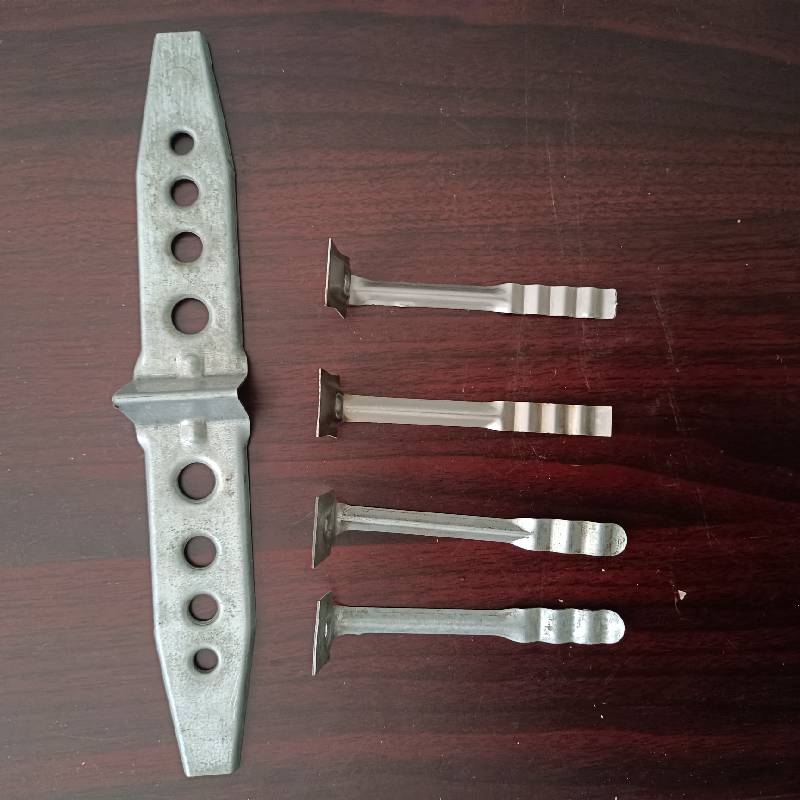
- Mobile Phone
- +8613931874955
- sales@cntcmetal.com
Stainless Steel Angle Bead for Durable and Precise Corner Finishing Solutions
Stainless Steel Angle Beads Enhancing Durability and Aesthetics in Construction
In the realm of construction and interior design, the details often make or break a project. One small yet significant component that has gained traction in recent years is the stainless steel angle bead. These items, often overlooked in favor of more traditional materials, offer a unique blend of durability, aesthetic appeal, and practicality.
What is a Stainless Steel Angle Bead?
A stainless steel angle bead is essentially a structural element that provides a corner or edge between two surfaces, especially where drywall meets drywall or plaster. Unlike traditional angle beads made from materials like PVC or galvanized steel, stainless steel angle beads are crafted from high-quality stainless steel, which grants them superior strength and a sleek appearance. This modern material choice caters to both functional and decorative needs, making them an essential component in various construction projects.
Durability at Its Best
One of the most compelling reasons to choose stainless steel angle beads is their incredible durability. The corrosion-resistant properties of stainless steel ensure that these beads can withstand harsh conditions, including exposure to moisture, temperature fluctuations, and various chemicals. This durability not only extends the lifespan of the construction work but also minimizes the need for frequent repairs or replacements, making it a cost-effective choice for contractors and builders in the long run.
In addition, stainless steel is highly resistant to denting and bending, which is crucial in high-traffic areas where wear and tear can take a toll on traditional materials. By incorporating stainless steel angle beads, builders can significantly improve the structural integrity of a building, providing added peace of mind for both contractors and clients.
Aesthetic Appeal
stainless steel angle bead

Beyond their functionality, stainless steel angle beads also add a modern touch to any space. Their sleek, polished finish complements contemporary design trends and can elevate the overall aesthetic of a room. Whether used in residential, commercial, or industrial settings, these angle beads can provide clean lines and a sophisticated look.
Moreover, stainless steel’s versatility allows it to blend seamlessly with various design elements, from minimalist interiors to more ornate settings. This quality enables designers to utilize stainless steel angle beads as not only functional pieces but also as decorative accents that contribute to a cohesive design narrative.
Installation and Application
Installing stainless steel angle beads is a straightforward process, making them a popular choice among professionals. They are designed to be easily incorporated into the construction workflow, whether for new builds, renovations, or repairs. Once installed, they create a sharp, defined corner that enhances the overall finish of walls and ceilings, ensuring that every angle is perfect.
These angle beads are commonly used in interior wall applications, but their utility extends beyond the confines of indoor spaces. They can also be effectively employed in outdoor settings, thanks to their high resistance to weather elements. This flexibility allows architects and builders to explore creative design options, maximizing both functionality and beauty.
Conclusion
In summary, stainless steel angle beads represent a significant advancement in construction materials, marrying strength, durability, and aesthetic appeal. Their corrosion resistance and longevity make them a smart investment for any building project, while their elegant appearance adds a touch of modernity to any space. As the construction industry continues to evolve towards more sustainable and innovative practices, stainless steel angle beads are likely to become an even more popular choice among builders, designers, and homeowners alike. By choosing stainless steel angle beads, one not only enhances the structural integrity of a project but also elevates its visual appeal, making them a quintessential component of contemporary construction practices.
share:
-
Your Source for Concrete Wall Ties and Masonry AccessoriesNewsJul.10,2025
-
Unlocking the Power of Iron Wire for Every ProjectNewsJul.10,2025
-
Explore Advanced Chain Wire and Stainless Steel Mesh FencingNewsJul.10,2025
-
Discover the Benefits of Annealed Wire ProductsNewsJul.10,2025
-
Discover China Stainless Steel Wire Mesh SolutionsNewsJul.10,2025
-
Build with Confidence Using High-Performance Masonry AccessoriesNewsJul.10,2025
-
Why Sacrificial Formwork Is Redefining Underground ConstructionNewsJun.06,2025



















